Stephen Hong Sohn's Blog, page 19
November 17, 2021
A Review of Rajiv Mohabir’s Antiman: A Hybrid Memoir (Restless Books, 2021)
![[personal profile]](https://i.gr-assets.com/images/S/compressed.photo.goodreads.com/hostedimages/1491408111i/22407843.png) ljiang28
ljiang28
Written by Stephen Hong Sohn
Edited by Lina Jiang
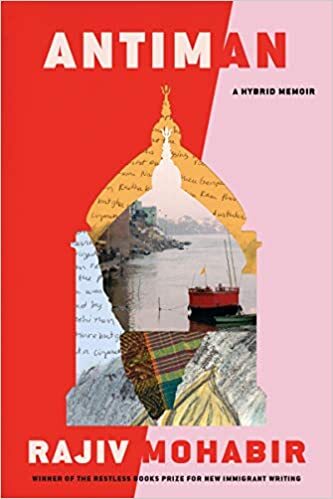
It’s been a minute since I covered books out of the brilliant Restless Books, but I was certain that I wanted to spend some time with one of their latest offerings: Rajiv Mohabir’s Antiman: A Hybrid Memoir. I’ve been a huge fan of Mohabir’s poetry, and we earlier covered one of Mohabir’s collections, so it’s always an interesting thing when a poet turns to a more prose-y form.
Let’s let the marketing description get us off the ground: “Growing up a Guyanese Indian immigrant in Central Florida, Rajiv Mohabir is fascinated by his family’s abandoned Hindu history and the legacy of his ancestors, who were indentured laborers on British sugarcane plantations. In Toronto he sits at the feet of Aji, his grandmother, listening to her stories and songs in her Caribbean Bhojpuri. By now Aji’s eleven children have immigrated to North America and busied themselves with ascension, Christianity, and the erasure of their heritage and Caribbean accents. But Rajiv wants to know more: where did he come from, and why does he feel so out of place? Embarking on a journey of discovery, he lives for a year in Varanasi, on the banks of the Ganges, perfecting his Hindi and Bhojpuri and tracing the lineage of his Aji’s music. Returning to Florida, the cognitive dissonance of confederate flags, Islamophobia, and his father’s disapproval sends him to New York, where finds community among like-minded brown activists, work as an ESL teacher, and intoxication in the queer nightlife scene. But even in the South Asian paradise of Jackson Heights, Rajiv feels like an outsider: ‘Coolie’; rather than Desi. And then the final hammer of estrangement falls when his cousin outs him as an ‘antiman’—a Caribbean slur for men who love men—and his father and aunts disown him. But Aji has taught Rajiv resilience. Emerging from the chrysalis of his ancestral poetics into a new life, he embraces his identity as a poet and reclaims his status as an antiman—forging a new way of being entirely his own.
Rapturous, inventive, and devastating in its critique of our own failures of inclusion, Antiman is a hybrid memoir that helps us see ourselves and relationships anew, and announces an exciting new talent in Rajiv Mohabir.” Mohabir’s memoir certainly revels in the hybrid aspect of the form. There is an obvious autoethnographic element, as Mohabir attempts to trace his familial background, one that is complicated by multiple diasporic movements. One of the most interesting aspects of the early half of the memoir is Mohabir’s predicament in India. He feels as though he must closet not only his queer background but also his mixed-caste background. Another formal hybridity occurs because of Mohabir’s focus on the interlingual valences of song. Interspersed throughout the prose tracks, we get songs in their original language as well as the occasional translations of them. Mohabir’s interest in music certainly reminds us of the poetic aspect of the text. Brilliant, honest, and moving.
Buy the Book Here
 comments
comments
A Review of Chandra Prasad’s Mercury Boys (Soho Teen, 2021)
![[personal profile]](https://i.gr-assets.com/images/S/compressed.photo.goodreads.com/hostedimages/1491408111i/22407843.png) ljiang28
ljiang28
Written by Stephen Hong Sohn
Edited by Lina Jiang
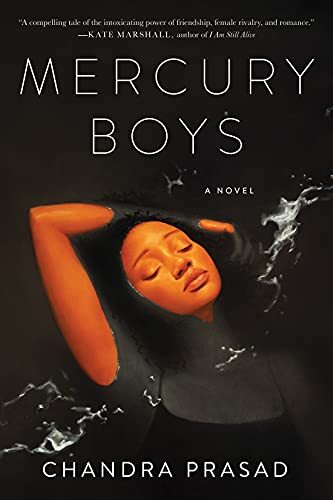
I was an absolute fan of Chandra Prasad’s last publication, Damselfly, so Mercury Boys (Soho Teen, 2021) was definitely high on my to-read list! As usual, Prasad absolutely excels at the complicated social dynamics that define teen life. And, in keeping with her past publications, Prasad also mines the thorny ways in which teen life intersects with identities in development.
Let’s let the official marketing description do some work for us: “History and the speculative collide with the modern world when a group of high school girls form a secret society after discovering they can communicate with boys from the past, in this powerful look at female desire, jealousy, and the shifting lines between friendship and rivalry. After her life is upended by divorce and a cross-country move, 16-year-old Saskia Brown feels like an outsider at her new school—not only is she a transplant, but she’s also biracial in a population of mostly white students. One day while visiting her only friend at her part-time library job, Saskia encounters a vial of liquid mercury, then touches an old daguerreotype—the precursor of the modern-day photograph—and makes a startling discovery. She is somehow able to visit the man in the portrait: Robert Cornelius, a brilliant young inventor from the nineteenth century. The hitch: she can see him only in her dreams. Saskia shares her revelation with some classmates, hoping to find connection and friendship among strangers. Under her guidance, the other girls steal portraits of young men from a local college’s daguerreotype collection and try the dangerous experiment for themselves. Soon, they each form a bond with their own “Mercury Boy,” from an injured Union soldier to a charming pickpocket in New York City. At night, the girls visit the boys in their dreams. During the day, they hold clandestine meetings of their new secret society. At first, the Mercury Boys Club is a thrilling diversion from their troubled everyday lives, but it’s not long before jealousy, violence and secrets threaten everything the girls hold dear.” So, this description is quite detailed, but I would argue that the book isn’t Saskia’s alone. She makes friends with a group of teen girls, who all become the Mercury Boys Club. There’s Lila, another minority at her high school, and then there are two mean girls: Sara Beth and Paige. Finally, there’s Adrienne, who seems more reluctant to engage in the socially aggressive behavior that are the hallmarks of Sara Beth and Paige’s approaches to teen life.
I found this book both fascinating and frustrating at the same time. On the one hand, the speculative conceit was a very attractive way into the text, as the time portal provided by the mercury daguerreotypes was something extremely unique. On the other, I sometimes though that the stakes of this kind of time travel could have been explored even further. For Saskia, traveling to the past is complicated due to her biracial status. In other contexts, these temporal shifts create other problems. For instance, Lila is queer and her same-sex romance presents other possible problems. Finally (and perhaps most intriguingly), Adrienne finds herself in a past in which she must care for dying and maimed soldiers during the Civil War. Prasad’s focus on the aspect of romantic interest is simultaneously structured but also limiting. This narrative template provides a key connection between all of the major characters but circumscribes the use of daguerreotypes primarily by the ways in which each girl interfaces with their chosen object of affection, but I kept wondering about the other possibilities of time travel, whether or not the girls might have established other relationships and projects connected with past temporalities. Of course, the novel would have been entirely different but Prasad’s conception of the speculative terrain is so rich, I couldn’t help but wonder what else might have been in store. Despite my own personal viewpoints, I did find the novel immensely readable and appreciate, as always, Prasad’s nuanced engagements with teen culture and the perils within.
Buy the Book Here
 comments
comments
September 13, 2021
A Review of Isabel Yap's Never Have I Ever (Small Beer Press, 2021)
![[personal profile]](https://i.gr-assets.com/images/S/compressed.photo.goodreads.com/hostedimages/1491408111i/22407843.png) alliearend
alliearend
Publisher: Small Beer Press (February 23, 2021)
Length: 248 pages
ISBN: 9781618731821
Adult Horror/Fantasy/Science Fiction


I’ll always have a soft spot for Small Beer Press; it was the first press to re-release Ted Chiang’s story collection. In this post, I'll cover some of my favorite stories from a more recent release of theirs: Isabel Yap’s absolutely outstanding debut Never Have I Ever.
“Good Girls” opens the collection with a reconsideration of the Filipino folk figure the manananggal, which is a kind of female vampiric construct. In this story, Yap employs the manananggal to explore the friendship between Kaye and Sara, two girls who attend boarding school together. The story moves dips in and out of two temporalities: in one, Kaye deals with a hunger that pushes her to locate and feed off the unborn. In the other, Kaye and Sara attempt to forge a connection despite the fact that Kaye might be considered to be a monster.
“A Cup of Salt Tears” takes us to Japan where the main character, Makino, takes care of her dying husband, Tetsuya. Makino strikes a deal with a kappa, a kind of water spirit, to help save Tetsuya. The deal is successful, but Makino must also confront the complexities of her strange relationship with Kawataro, the water spirit.
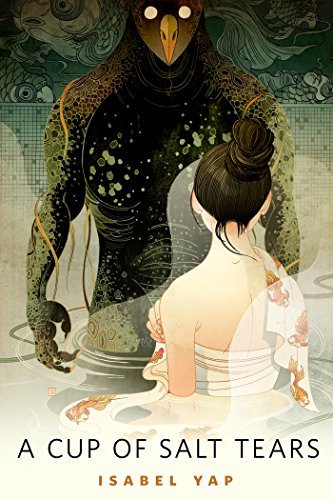
“Milagroso” pushes us into a science fictional terrain in which a Filipino family lives in a future in which most foods have been genetically modified to the point where what is considered miraculous is the consumption of natural products.
My favorite story in the collection is hands down “A Spell for Foolish Hearts” which follows the on-again-off-again romance between two coworkers, Karl and Patrick. This story is set in San Francisco and showcases Yap’s masterful understanding of the cityscape. There’s startups, coffee, and lots of fog, and then there’s the slow burn connection between Patrick and Karl. This story made me wistful for my time in the Bay Area!
In “Have You Heard the One about Anamaria Marquez,” the collection moves into a more traditional ghost story in which school girls must consider the possibility of a vengeful apparition stalking the school grounds.
“Hurricane Heels (We Go Down Dancing)” is a fun one. This spritely story explores the lives of a group of women after they discover they have superpowers, as well as their desire to balance a normal life alongside their duties as superpowered women.
“All the Best of Dark and Bright” reimagines a pre-colonial origin story of the first man and woman.
One of the darkest but most engaging stories ends the collection. In “A Canticle of Lost Girls,” Yap tackles the traumas that can emerge when encountering the institution of Catholic schooling. The story employs supernatural spirits to enact a form of retributive justice.
Every story is outstanding, and I certainly plan to use this book in future courses. I haven’t read many texts which so deftly explore the murky boundaries between Filipinx folklore and speculative conceits, so it’s a real treat to have this book out in the world. A definite must-read!
Buy the book HERE.
Review by Stephen Hong Sohn
Edited by Allie Arend
 comments
comments
September 8, 2021
A Review of Rin Chupeco’s The Ever Cruel Kingdom (HarperTeen, 2020)
![[personal profile]](https://i.gr-assets.com/images/S/compressed.photo.goodreads.com/hostedimages/1491408111i/22407843.png) alliearend
alliearend
Publisher: HarperTeen (November 10, 2020)
Length: 480 pages
ISBN: 9780062821904
Reading Age: 14 and up
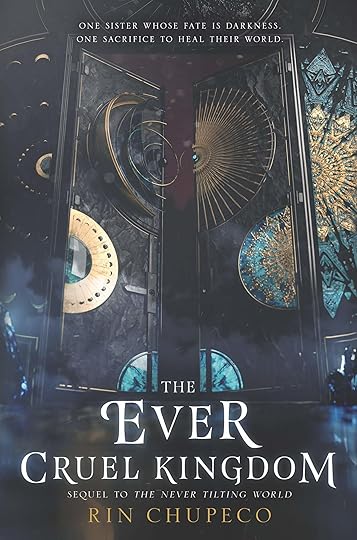
So, I saved reading this particular title for a time when I needed something entertaining. The Ever Cruel Kingdom is the second book in Chupeco’s Never Tilting World duology, following the titular primary installment, which I was a big fan of. This duology reminds me a bit of Kendare Blake’s Three Dark Crowns series which revolves around a set of sisters who, as in every generation, must battle each other to the death in order to ascend to the throne. In Chupeco’s duology, two goddesses are born each generation, one of whom must be sacrificed so that the world, known as Aeon, may persist. Let’s let the official marketing description give us some background:
“After a treacherous journey and a life-shattering introduction to a twin neither knew she had, sisters Haidee and Odessa expected to emerge from the Great Abyss to a world set right. But though the planet is turning once again, the creatures of the abyss refuse to rest without another goddess’s sacrifice. To break the cycle, Haidee and Odessa need answers that lie beyond the seven gates of the underworld, within the Cruel Kingdom itself. The shadows of the underworld may hunger to tear them apart, but these two sisters are determined to heal their world—together.”
The description centers the twin sisters, Haidee and Odessa, but this novel actually boasts at least four different narrators; in addition to the twins, we get the viewpoints of both Haidee’s romantic interest, Arjun, and Odessa’s romantic interest, Lan. What I found most entertaining about this work is Chupeco’s ability to shift between so many first person perspectives while also maintaining the momentum of the narrative AND carving out the individuality of each storyteller. Each storyteller has their own idiosyncratic way of looking at the world. Odessa, for instance, is constantly fighting off the forces of evil that have pushed her to accept some gifts from the underworld. Arjun is a plucky, devoted hero, who is always up for an adventure, while Lan is a fierce and protective catseye, an individual with particular powers of healing and emotive connection. Haidee is probably the most optimistic of the bunch, with a sunny disposition.

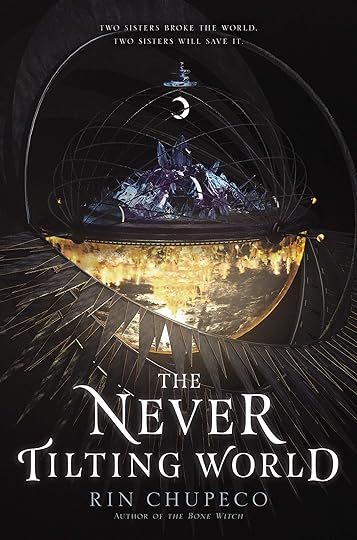
The surrounding cast of characters is likewise fun, and includes Lisette, a character from Arjun’s ethnic background who also finds herself attracted to Haidee. Vanya, Haidee’s suitor, from the Golden City, has one of the best character arcs. I absolutely loved this minor character because he’s a lover and scholar of texts; he certainly could have been an English major if he didn’t hail from such a fantastically configured storyworld.
I’ll pause here for my requisite spoiler warning, so do not read beyond this line unless you want to find out more about what happens.
The conclusion I found to be particularly fitting. Readers definitely do not want to see Haidee or Odessa go the way of the dinosaur, so it was a huge relief to see it was Latona, Haidee and Odessa’s biological mom (Odessa was raised by Asteria, Odessa’s aunt and Latona’s sister), and Asteria take the hit for the problems set up by previous generations. Chupeco puts her own spin on the myths of Orpheus and Eurydice as well as Hades and Persephone, as the twins along with their allies travel into the underworld to seek a solution to Aeon’s troubles. The novel ends with some serious losses and several complications, but the solution to the need for a sacrifice is clever, logical, and fulfilling for readers.
Upon listening to a podcast this morning (in late July of 2021), Chupeco apparently has about four books in the works. How lucky are we!
Buy the book HERE.
Review by Stephen Hong Sohn
Edited by Allie Arend
 comments
comments
September 1, 2021
A Review of Mike Curato’s Flamer (Henry Holt, 2020)
![[personal profile]](https://i.gr-assets.com/images/S/compressed.photo.goodreads.com/hostedimages/1491408111i/22407843.png) alliearend
alliearend

Publisher: Henry Holt (September 01, 2020)
Length: 368 pages
ISBN13: 9781627796415
Reading Age: 14 and up
I had a rough day one Saturday in the summer of 2021, so what I needed was something a little bit different. It had been awhile since I read a graphic novel, so I picked up Mike Curato’s Flamer, which turned out to be an absolutely wondrous but also painful read. Let’s let the pithy marketing description get this review started:
“It's the summer between middle school and high school, and Aiden Navarro is away at camp. Everyone's going through changes—but for Aiden, the stakes feel higher. As he navigates friendships, deals with bullies, and spends time with Elias (a boy he can't stop thinking about), he finds himself on a path of self-discovery and acceptance.”


As you might have guessed , the text is an exploration of a young teenager coming to terms with his budding queer sexuality. Curato employs a Boy Scout camping trip as the canvas upon which this emotional and fraught journey is painted.
Throughout the narrative, we get glimpses into Aiden’s past: his constant feelings of alienation; his shame about his body and the fact that he is overweight; and his self-denigration of his own effeminate mannerisms, a quality further policed by his male peers. Fortunately, he does have some strong friendships, but one night he ends up crossing the line with Elias, his male crush, and he has to consider not only what this friendship means now that he has complicated it, but also what do with these same-sex feelings.

Curato’s graphic novel is particularly affecting because Aiden is such an introspective and sensitive character. He fully understands that he’s not like many of his male counterparts. He wants to fit in but he can’t make himself do so. Much of this text is dedicated to struggling with the cisgender, normative masculinity that haunts Aiden.
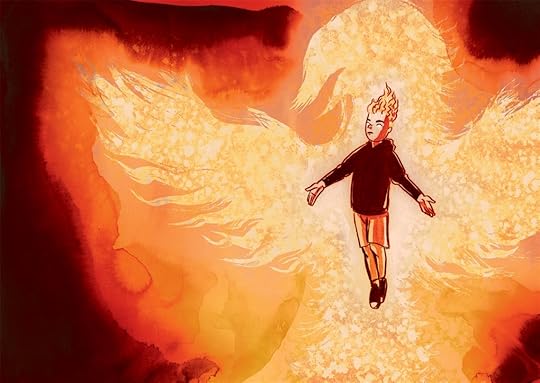
The other standout aspect of this graphic novel is Curato’s artwork, which is the perfect vehicle for this story. There are often long panel sequences without any words, a quality which only enhances the poetic verve of the narrative. This text is also strongly reminiscent of other protoqueer and queer coming of age narratives such as R. Zamora Linmark’s Rolling the R’s, Rakesh Satyal’s Blue Boy, and Alexander Chee’s Edinburgh. Absolutely stunning!
Buy the book HERE.
Review by Stephen Hong Sohn
Edited by Allie Arend
 comments
comments
August 30, 2021
A Review of Chloe Gong's These Violent Delights (Margaret K. McElderry Books, 2020)
![[personal profile]](https://i.gr-assets.com/images/S/compressed.photo.goodreads.com/hostedimages/1491408111i/22407843.png) alliearend
alliearend
Publisher: Margaret K. McElderry Books (November 17, 2020)
Length: 464 pages
ISBN13: 9781534457690
Grades: 9 and up
Chloe Gong’s These Violent Delights (Margaret K. McElderry Books, 2020), which is not to be confused with Victoria Namkung’s These Violent Delights, is an auspicious YA debut that riffs off of our favorite star-crossed Shakespearean Romance. For those of you attuned to the phrasing in Gong’s title, “these violent delights” also appears as a common refrain in HBO’s Westworld. In any case, let’s let the marketing description give us some context:
“The year is 1926, and Shanghai hums to the tune of debauchery. A blood feud between two gangs runs the streets red, leaving the city helpless in the grip of chaos. At the heart of it all is eighteen-year-old Juliette Cai, a former flapper who has returned to assume her role as the proud heir of the Scarlet Gang—a network of criminals far above the law. Their only rivals in power are the White Flowers, who have fought the Scarlets for generations. And behind every move is their heir, Roma Montagov, Juliette’s first love…and first betrayal. But when gangsters on both sides show signs of instability culminating in clawing their own throats out, the people start to whisper. Of a contagion, a madness. Of a monster in the shadows. As the deaths stack up, Juliette and Roma must set their guns—and grudges—aside and work together, for if they can’t stop this mayhem, then there will be no city left for either to rule.”
Those familiar with Romeo and Juliet will have to give Gong credit for her fun transformation of Elizabethan contexts. In 1926 Shanghai, you don’t have the Capulets and the Montagues, you instead have the Chinese gang, the Scarlet Flowers, who go by the surname Cai, against the Russian gang, the White Flowers, who go by the surname Montagov(a). Unfortunately for Gong, there wasn’t going to be an Asian last name that would approximate "Capulet," but she gets an A+ for effort here.
The novel takes a bit to get off the ground, but Gong throws in some interesting generic hybridity here. It’s not just a romance; there’s also a plague storyline AND a monster storyline to keep things interesting. The complications between Juliette and Roma are exacerbated by the political and economic dynamics of the time. Shanghai is becoming a major commercial hub. The rise of Communist influence increases tensions between the two gangs. And while Juliette and Roma dance around the fact that their gangs are rivals, they must also work together to figure out the cause of the deadly outbreak of disease.
The science fictional elements of this text were the biggest surprise for me, as Gong makes this particular narrative really reverberate alongside the COVID contexts we’re living in. The scientist for the White Flowers, a man by the name of Lourens, is Gong’s analogue for Friar Laurence—who, coincidentally, I channelled in high school in a dramatic monologue for extra credit. Gong’s Lourens is trying to figure out what the deal is with the infectious disease and how it operates. As the novel moves toward the conclusion, Juliette and Roma find a way to reconcile, while also realizing that their enemy may be more complicated than they thought. Gong’s novel benefits from juggling between both Juliette’s and Roma’s points of view, giving us a more expansive sense of what each of the gangs is up against.
The set up for part two is certainly tantalizing, and I know we’ll be looking to review Gong’s second installment as soon as it arrives! A fun, speculative reimagining of the Shakespearean play that goes beyond the source material in its depiction of 1920s Shanghai!
 comments
comments
July 31, 2021
A Review of Gene Ha’s Mae Vols. 1 & 2 (Oni Press, 2018 & 2019)
![[personal profile]](https://i.gr-assets.com/images/S/compressed.photo.goodreads.com/hostedimages/1491408111i/22407843.png) alliearend
alliearend

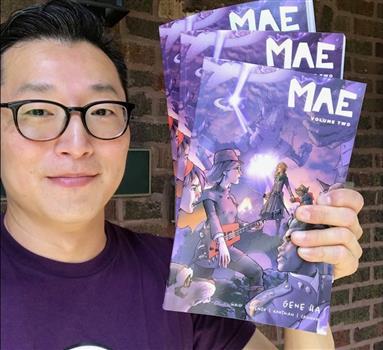
Publisher: Oni Press (Jul 2018, Oct 2018)Length: 208 pages (Vol. 1), 176 pages (Vol. 2)
ISBN13 (Vol. 1): 9781549302794
ISBN13 (Vol. 2): 9781549302800
Reading Age: 13–16 years
Gene Ha’s Mae series is one that I left for the end of the semester when I truly needed a break from the grind of this COVID-impacted year. Ha has completed two omnibus volumes of the series, with at least one more on the way. Let’s let the official marketing description for Vol. 1 get us started:
"Mae's beloved older sister, Abbie, has been missing for years. Mae has her theories about where Abbie might be. But nowhere in her wildest imagination do those theories encompass a fantasy world full of terrifying monsters, power-hungry nobles, and nefarious scientists. That is, until Abbie suddenly reappears in Mae's world. And not alone.”
So, the first volume reunites the sisters. Abbie’s been gone for around seven years, and Mae’s been wondering where Abbie has gone off to. Well, she does find out, and she’s in for a huge surprise. Apparently, Mae Vol. 1 is part of a speculative subgenre called “portal fiction,” a phrase I’d never heard of until I started reading more about this kind of work. One of the most popular “portal fictions” is none other than The Lion, The Witch, and the Wardrobe. The titular wardrobe is the path through which children can travel to the magical land of Narnia. In a similar fashion, folx in the fictional world that Ha has created can travel to another world via secret monoliths that only a few people know about. Abbie, once known as Queen Ani, is one of those who has been able to use these monoliths. She eventually arrives back on Earth, but when Abbie is attacked by denizens of this other world and Abbie and Mae’s father seems to have been kidnapped, the two must team up to travel to this other world. The first volume ends with Abbie and Mae on the run where they encounter an old acquaintance of Abbie’s.
The second installment is equally if not more exciting than the first. The official marketing description gives us more context but also some spoilers, so do not read forward unless you don’t mind learning a little bit more about this series:
"Mae has followed her long-lost sister Abbie through a gate and into another world: Cimrterén, a world full of dangerous creatures, strange science, and warring nobles. Their father has gone missing at the hands of these malicious dukes, and Mae and Abbie must fight their way to the heart of Ebenhrad to find their father. Along their journey, they come across old friends, plus some new adversaries determined to stand in their way. In the second volume of the series, Mae and Abbie face some of their biggest challenges yet. Even fantasy-locked sisters can have their differences. After a big blow-up fight, Mae sets out on her own, leaving Abbie behind. When Mae learns that navigating her own way through Cimrterén isn’t as easy as she thought, she calls on her old friend Dahlia for backup. Together they begin to uncover sinister secrets and piece together a much darker history to the Fortell family than they’d ever thought possible."
Whereas the first volume operates to unite the two sisters and see them working together, the second throws a huge wrench into the equation when Mae strikes out on her own. It eventually becomes apparent that they must work together if they are going to take down the “big bad” of Cimrterén. Dahlia’s inclusion is a great one, as Ha excels at depicting strong women who can take care of themselves.


One of the series’ best aspects is Ha’s incredible artistic talent. There is a photorealistic quality to Ha’s figurations, melded somehow with a bit of anime, that makes each character truly unique. The included author’s notes allow us to understand Ha’s process, which sometimes includes friends sending pictures of themselves for Ha to use as character inspiration. This methodology makes a lot of sense because his characters have so many striking particularities. In any case, the second volume really does end on a kind of cliffhanger, but a third volume has yet to be listed. A dorkaholics article reveals that Ha does have plans to release a Vol. 3, but he’s also working on other projects in the meantime.
This Asian American literature fan hopes Ha comes back to the world of Mae soon so we can see what happens next! A great series with fantastic worldbuilding and some exceptional art!
Buy the books HERE.
Review by Stephen Hong Sohn
Edited by Allie Arend
 comments
comments
Summer Managing Editor Intro
![[personal profile]](https://i.gr-assets.com/images/S/compressed.photo.goodreads.com/hostedimages/1491408111i/22407843.png) alliearend
alliearend
Hello, Asian American lit fans! My name is Allie Arend and I'm your new summer managing editor here at AALF. I'm a southern transplant from Arkansas to the desert of California's Inland Empire, where I'm working on a PhD in English at the University of California, Riverside. I love contemporary speculative fiction, and my PhD research focuses on sf that imagines more just worlds and how we can bring them into being, with theoretical touchstones in Black feminist theory, queer studies, and utopian studies, among others. It's hard to pick an all-time favorite book, but Octavia E. Butler's Parable of the Sower is definitely a contender. I've just finished reading Susanna Clarke's Piranesi, which I really loved, and will be reading Tasha Suri's The Jasmine Throne next. I'm also in the process of getting a copyediting business off the ground and am thrilled to get to do some editing here as well.
Happy reading, and don't be a stranger!
 comments
comments
May 27, 2021
Simon and Schuster Young Readers Spotlight: AAPI Month
![[personal profile]](https://i.gr-assets.com/images/S/compressed.photo.goodreads.com/hostedimages/1491408111i/22407843.png) stephenhongsohn
stephenhongsohn
While we’re still within the time frame of AAPI heritage month, we did want to complete a couple of spotlight posts on certain publishers that have been working hard to support Asian American writers. One such publisher is the young readers division at Simon & Schuster, which has developed a very robust set of publications that we’re eager to read over the summer and into next year. One of the best things about S&S Young Readers is that they created an imprint, Salaam Reads, that focuses on South Asian American and South Asian/ Anglophone writers!
In any case, here are our top five:
1.) Chloe Gong’s These Violent Delights
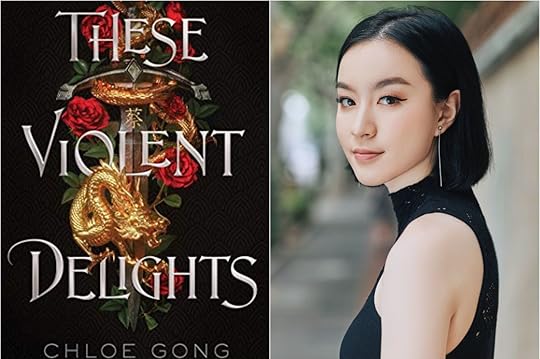
Anything that has speculative elements and re-envisions Shakespeare is definitely on our to-read list.
2.) Loan Le’s A Pho Love Story
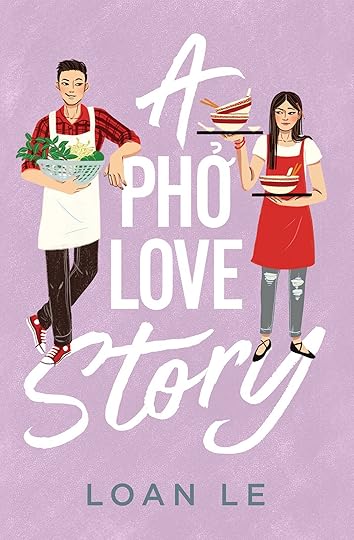
As a lifelong lover of pho and Vietnamese food, we’re here for this one!
3.) Mary Y.K. Choi’s Yolk.
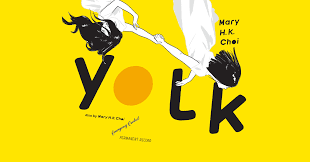
Choi is a master at the YA romance. We earlier reviewed both her previous publications, Emergency Contact and Permanent Record
4.) Kelly Loy Gilbert’s When We Were Infinite.
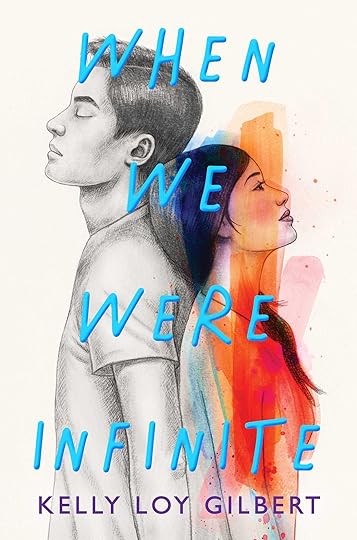
We have covered Gilbert’s earlier publications, and always find Gilbert’s work sophisticated and poignant.
5.) S.K. Ali’s Saints and Misfits and Misfits in Love; these titles are both in a series and part of Salaam Reads, which I mentioned before! YAY!

 comments
comments
A Review of Akemi Dawn Bowman’s The Infinity Courts (S&S for YR, 2021).
![[personal profile]](https://i.gr-assets.com/images/S/compressed.photo.goodreads.com/hostedimages/1491408111i/22407843.png) stephenhongsohn
stephenhongsohn
A Review of Akemi Dawn Bowman’s The Infinity Courts (S&S for YR, 2021).
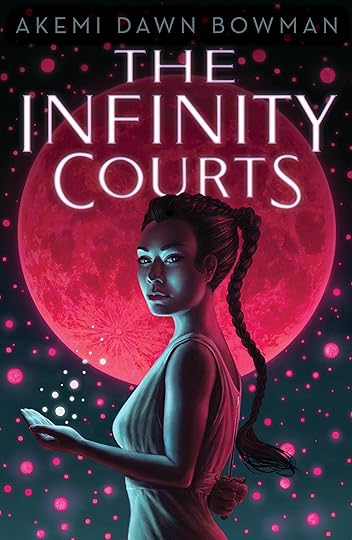
Publisher: Simon & Schuster Books for Young Readers (April 6, 2021)
Length: 480 pages
ISBN13: 9781534456495
Grades: 7 and up
Ages: 12 – 99
Wow! Certainly, one of my favorite YAs I’ve read in a very long time! I’m here to review Akemi Dawn Bowman’s The Infinity Courts (S&S for YR, 2021), which is the first in a larger series. Let’s hope we have at least three in this one because there’s still so much to learn about this particular world. The official marketing description gives us this information: “Eighteen-year-old Nami Miyamoto is certain her life is just beginning. She has a great family, just graduated high school, and is on her way to a party where her entire class is waiting for her—including, most importantly, the boy she’s been in love with for years. The only problem? She’s murdered before she gets there. When Nami wakes up, she learns she’s in a place called Infinity, where human consciousness goes when physical bodies die. She quickly discovers that Ophelia, a virtual assistant widely used by humans on Earth, has taken over the afterlife and is now posing as a queen, forcing humans into servitude the way she’d been forced to serve in the real world. Even worse, Ophelia is inching closer and closer to accomplishing her grand plans of eradicating human existence once and for all. As Nami works with a team of rebels to bring down Ophelia and save the humans under her imprisonment, she is forced to reckon with her past, her future, and what it is that truly makes us human. From award-winning author Akemi Dawn Bowman comes an incisive, action-packed tale that explores big questions about technology, grief, love, and humanity.” What makes this YA so wonderful is that it explores the afterlife in ways that I haven’t seen before. The closest I’ve seen is the work of Gabrielle Zevin, who has a pretty unique version of the afterlife in Elsewhere (definitely check that one out). As the description points out, there is an AI named Ophelia that is trying to take over Infinity and eliminate humans entirely from that plane of existence. The issue that the novel brings up concerns whether or not humans or the AI have the “right” to kill the other. Indeed, Ophelia comes from the perspective that her artificially intelligent kind have been abused and exploited for a long time, so when she hacks into the afterlife, she figures that she can get a kind of revenge upon all those who did her and her peoples wrong. The humans have a legitimate beef to resist Ophelia’s machinations, but Nami is a mediator figure. She wonders: is there a way to get humans and AI to coexist rather than destroy each other? This kind of tension is absolutely instrumental to the novel’s success, as the readers are in for a wild ride. A couple of wonderful surprises toward the concluding arc set us up for another installment of the series. As I mentioned before, one of my favorite YAs I’ve read in a very long time! Go Akemi! Let’s see the next in the series sooner rather than later =).
Buy the Book Here:
https://www.simonandschuster.com/books/The-Infinity-Courts/Akemi-Dawn-Bowman/9781534456495
 comments
comments



